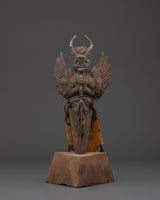
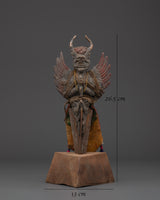
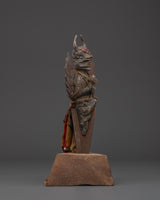
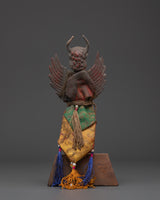
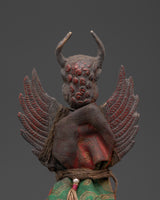
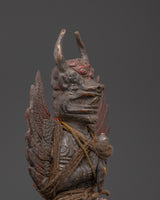
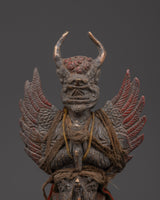
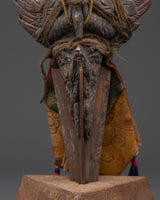
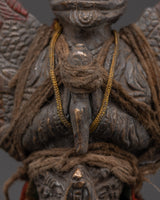
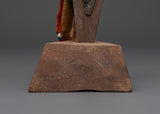
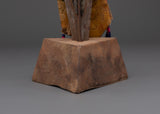
Protective Iron Phurba | Tibetan Sacred Ritual Dagger

100% AUTHENTIC

HANDMADE

FREE SHIPPING
Energy Clearing and Protective Iron Phurba | Tibetan Dagger for Meditation
--------------------------------------------
Size: 26.5cm (Height) x 13cm (Width)
Weight: 13cm
Materials: Iron Body
--------------------------------------------
About The Ritual Item :
This meticulously made Protective Iron Phurba is an excellent portrayal of the Phurba's spiritual and protective powers in Tibetan Buddhism. Standing at 26.5 cm tall and weighing 1.14 kg, this sculpture is both large and intense, making it an excellent addition to any spiritual or decorative collection.
The Phurba is widely regarded as a protective instrument, with the power to repel bad energy and spirits. It has a distinctive Iron Body that lends power and durability to the god it depicts. The Phurba is intricately designed, featuring traditional Tibetan imagery with its sharp blade-like edge and the protecting figure associated with ritualistic usage. The figure's position and furious look suggest its use in exorcism rituals and spiritual protection, making it a vital instrument in Tibetan customs.
The statue's base is built in an exquisite square form, allowing it to stand strong as a display piece. The Iron Phurba is adorned with elaborate carvings that lend it a textured finish, enhancing its historical authenticity and spiritual value. Whether you're a collector of precious Buddhist items, seeking spiritual protection, or simply looking for a significant ornamental piece, this Iron Phurba offers both beauty and deep cultural significance.
Introduction To The Phurba :
The ceremonial dagger (Sanskrit: Kila; Tibetan: phurba) is essential for expelling evil and is considered particularly effective in neutralizing the forces obstructing Tantric Buddhist practice. It has ancient origins, first appearing in the Indian Rig Veda as the core blade of the vajra used by Indra to destroy the primordial cosmic snake Vritra. Kila, derived from Sanskrit, was most likely associated with Vedic sacrifices. Meditation on the Vajrakila Tantra, an early Indian scripture first promoted in Tibet in the eighth century by Padmasambhava, one of the founding teachers of Tibetan Buddhism, is used to invoke the three-headed Vajrakila Buddha.
How to Set Up Your Buddhist Shrine?
Find a clean, quiet, and uncluttered spot.
Please set up an altar table and cover it with an altar cloth that calls to you.
Place your sacred item (statue, thangka, or a picture of Buddha) at the center.





















